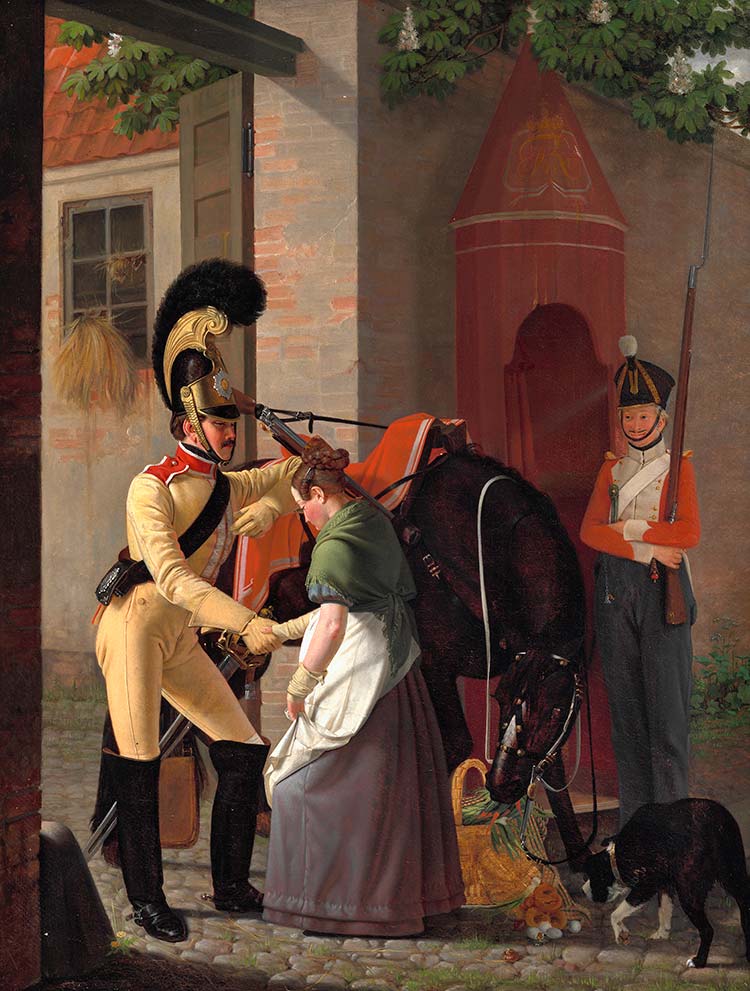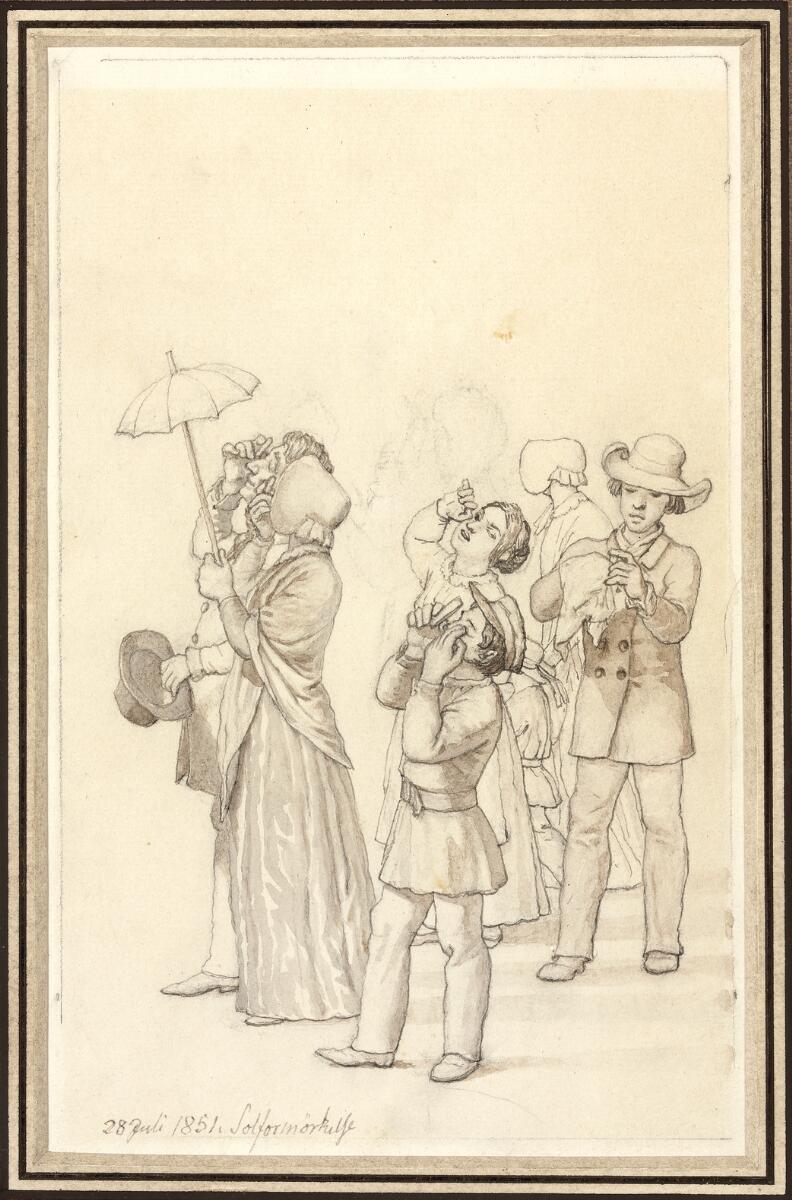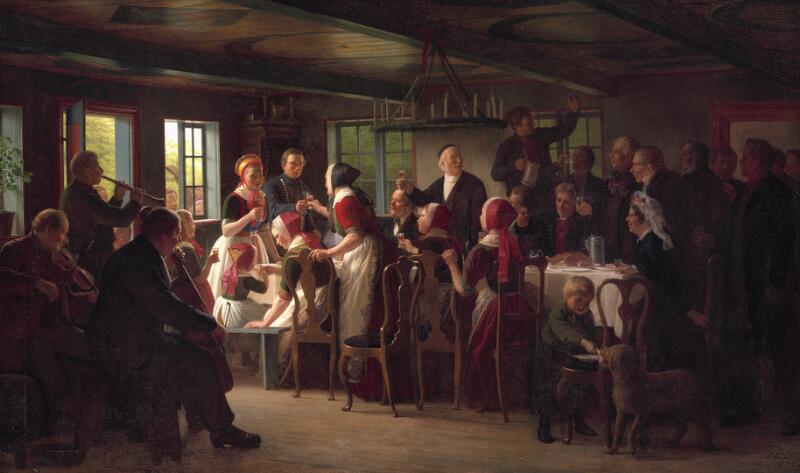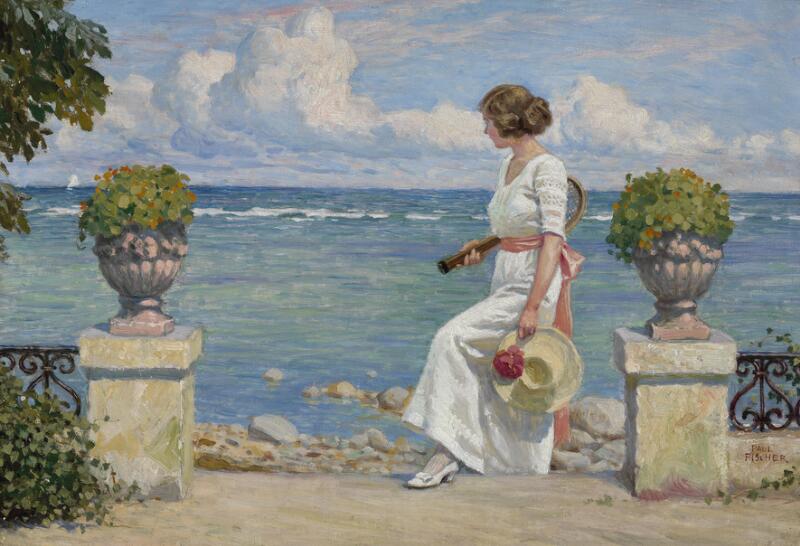Genre Paintings in Danish Art
Depictions of people in the midst of everyday situations became particularly popular among 19th century artists. These motifs go by the name of "genre paintings" and often appear enticing with their narrative content. You can experience several contributions to the genre painting by Danish artists such as Ditlev Blunck, C.W. Eckersberg, Julius Exner and Paul Fischer at the upcoming auction in Copenhagen.
Ordinary people, snapshots of scenes from everyday life and anecdotal content characterize the so-called genre paintings in art. Although one can find examples of this ‘genre’ both earlier and later in the history of art, the motif was especially in vogue among the painters of the 19th century. At this year's first Live Auction in Copenhagen on Tuesday 1 March at 4 pm we present several genre paintings by a highly diverse group of artists.
What's Going On?
A young girl with artfully coiffed hair, flushed cheeks and a downcast gaze gives her hand to a young horse guard. The girl has dropped her basket in befuddlement, and the man's horse is about to devour her carrots while a dog sniffs around the pretzels and eggs lying scattered on the ground. In the background stands a sentry with a mischievous expression on his face. This is the scene of Ditlev Blunck's (1798-1854) motif from 1828, which over time has been the subject of all sorts of interpretations due to its ambiguous details. The artist himself was originally from Holstein but studied at the Danish Royal Academy of Fine Arts in Copenhagen and is considered one of the Danish Golden Age painters and part of the circle around Bertel Thorvaldsen in Rome. Blunck's most famous motif is the work entitled "Mareridt" (Nightmare) from 1848, which today hangs at The Nivaagaard Collection. In that painting, a demonic mare sits on the stomach of a young woman sleeping, who, contrary to expectations, expresses sexual pleasure rather than anxiety about the situation. In this confrontation with bourgeois values, the painting must have seemed controversial at the time, and perhaps this was also the case with the work now up for auction, because something is going on between the three depicted persons – we just don’t know what.
With the Gaze Fixed on the SkyAnother of the Danish Golden Age painters who also loved the genre painting was the master of them all, Christoffer Wilhelm Eckersberg. At the auction we can present his eminent drawing "Solformørkelse" (Solar Eclipse), where a group of ordinary Copenhageners are crowded together to observe a rare astronomical phenomenon in the sky through dark protective glasses. This is the total solar eclipse that took place on 28 July in 1851 and has not been seen in Denmark since. For a moment, the sky was shrouded in a layer that turned day into night. As is characteristic of Eckersberg's interpretation of the genre, the object of interest of those portrayed lies outside the frame, and as a viewer one sees only the gathering, and not what preoccupies them. Eckersberg was very interested in science and described the scene in his diary as "a rare act", and the offered work stands as one of the very rare eyewitness accounts of the day – it also reflects the old artist's own view of the world at a time when he had developed cataracts in both eyes. |
|
|
"At about 3 o'clock a solar eclipse began, which was almost total at 4 o'clock and then disappeared again at about 5 o'clock. There were many people in the square with their protective glasses to see this rare act of nature. When the eclipse began, the light immediately dimmed, and when the eclipse peaked for about 4 minutes, it was twilight all around, and the blue sky, the clouds, and all other objects took on a peculiar dim grey colour, and silence reigned everywhere (…).”
Christoffer Wilhelm Eckersberg, Diary 28 July 1851.
From Exner's Farmers to Fischer's VitalityA little later in the 19th century, Julius Exner unfolded his talent. His main line of work became painting idyllic scenes with healthy and red-cheeked people from the Danish peasantry. At the auction, we can experience him with an entertaining genre painting in the form of a depiction of a wedding in North Zealand from 1875, where the toasting farmers are dressed in colourful folk costumes. The atmosphere is cheerful, and musicians are playing a festive tune, while a little boy has avoided the watchful eyes of the adults and is feeding a dog directly from his plate. |
|
|
|
|
|
We also find a red-cheeked and healthy model in a painting by the later proponent of the genre painting, Paul Fischer. At the auction we have eight of his coveted works, including the painting entitled “Mon han kommer?” (Is He Coming?). The young woman in a bright summer dress has a tennis racket under her arm, a straw hat in hand and a gaze directed towards the sea, while she is probably waiting for her partner in the game. With a painting such as this, Fischer inscribes himself in the vitalism of the time, where the active life, healthy body and nature were cultivated in the world of art, as one sees it in the works of artists such as Jens Ferdinand Willumsen and Rudolph Tegner. |
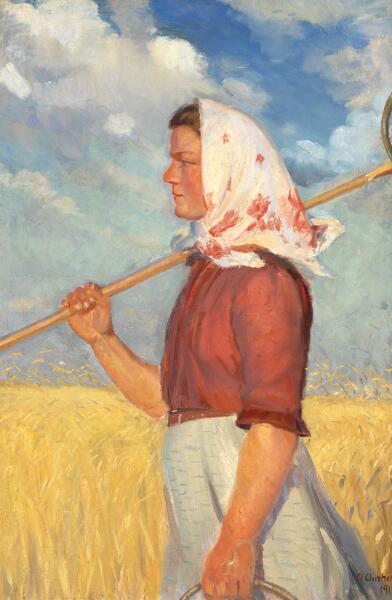
For further information, please contact:
|
|
Julie Arendse VossJulie Arendse VossHead of department / København |
|
|
Birte StokholmBirte StokholmSpecialist / København |
|
|
Søren Kjerk HolmstrupSøren Kjerk HolmstrupSpecialist / København |
